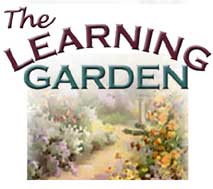
From Seed to Seed:
Plant Science for K-8 Educators
 |
From Seed to Seed: |
|
|
Competition in the garden. Last month you tilled a small area for your new schoolyard garden, but it was too early to plant, so you left it as it was. A few weeks later you noticed what seemed like millions of tiny seedlings sprouting there. Most soil is full of seeds from various plants-usually "weedy"-waiting for the right conditions to germinate. Tilling the ground exposes the seeds to light, a characteristic need of many weed seeds. Perhaps more importantly, you've removed the existing plants-the competition-from that spot, freeing it up for new colonizers. A few weeks later (you've been too busy to plant!), you look out your classroom window and see that the area is more green than brown! Upon closer examination, you see that just a few species dominate the area. These species might include not only the seedlings, but also any perennial ground cover or grass nearby that had the means (stolons? rhizomes?) to spread into the open area. You and, preferably, your students have witnessed a remarkable process-the process by which plants compete for space and resources, "duking it out," if you will, until one is the victor in colonizing an area. This is a key point in the study of ecology.
Several times during the growing season, your students may edge the garden, trying to keep the encroaching grasses and other invaders from smothering their flowers. This brings up another key point. In nature, ecosystems are self-regulating-plants grow only in places to which they are adapted, and even there they are in constant competition for resources. The garden, however, is an artificial setting-and the gardener must do the regulating. Student gardeners must regulate the competition so that the favored plants are the "winners." After all, how often do you see a hybrid tea rose growing wild by the side of the road? It may seem harsh to use words like "duke it out," "invaders," and "winners," but it is only to point out that, in nature, competition ensures that only the most well-adapted plants will grow in a specific area. Most of the cultivated garden plants that your students will use are not the plants that would be growing in the garden were it not for their intervention. Even if the gardener followed all of the recommendations of hardiness zone, light level, and soil pH, it is more than likely that there is a native plant better adapted to that spot. The popularity of native gardens, wildflower meadows, and xeriscaping (water-conserving landscaping for arid regions) has grown in recent years. People are realizing how much easier it is to grow plants that are well adapted-and are strong competitors-than it is to grow marginally hardy or particularly finicky plants. |
||||
|
Made possible by a grant from Oracle Corp. Copyright 2001, National Gardening
Association, Inc. For questions regarding this web site, contact Webmaster |